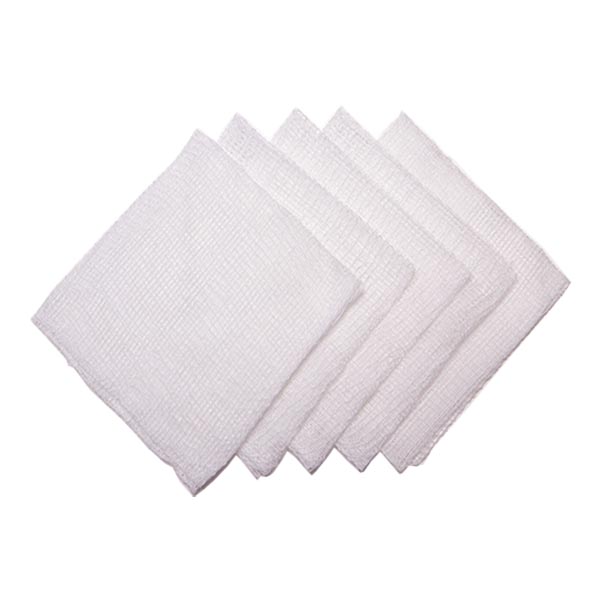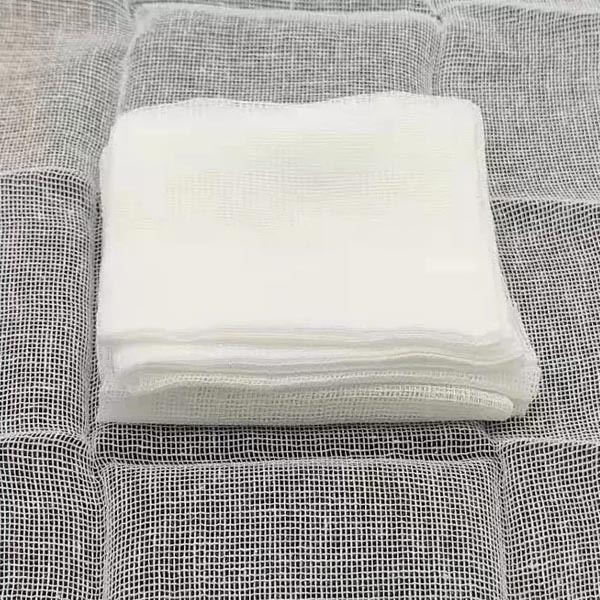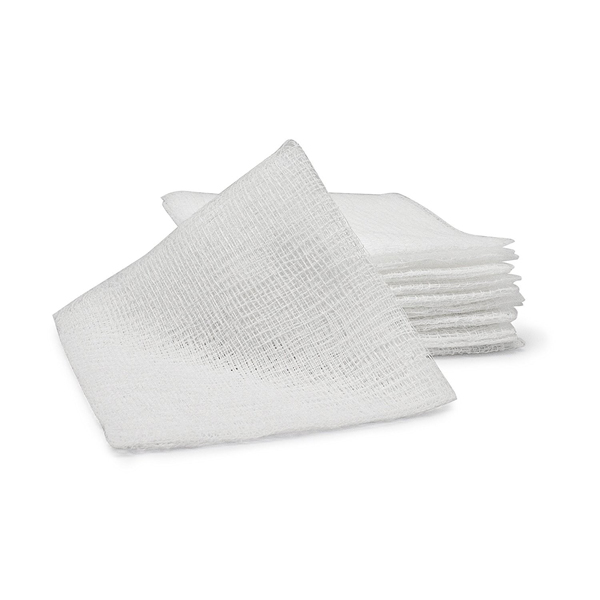This article provides a comprehensive overview of sterile and non-sterile gauze pads, their uses, differences, and selection criteria. It’s designed to be a valuable resource for hospital procurement managers, medical supply distributors, clinic administrators, and other healthcare professionals sourcing medical consumables from China and similar regions. It also includes information on finding quality suppliers, understanding regulations and certifications, and common pitfalls. Reading this information is worthwhile as it addresses the pain points faced by people, like Mark Thompson, when sourcing these vital medical supplies.
1. What are Gauze Pads and Why are They Essential Medical Supplies?
Gauze pads are a fundamental component of any medical setting, from hospitals and clinics to first-aid kits. They are thin, woven, or non-woven fabric squares used for a wide range of medical applications, primarily in wound care. Gauze is a type of medical dressing designed to protect wounds, absorb exudate, and aid in the healing process.
Gauze pads come in sterile and non-sterile forms. They are crucial for wound management, the treatment of injuries, and keeping wounds clean. The choice between sterile and non-sterile gauze depends on the specific application and the risk of infection. For example, Zhongxing’s Medical gauze padding 4cmx4cm sterile disposable are a good example of pads used in a professional setting.
2. What are the Main Types of Gauze Used in Medical Settings?
There are two primary types of gauze: woven and non-woven.
- Woven Gauze: Woven gauze is made from cotton fibers that are woven together, creating a fabric with a loose, open weave. This open weave allows for excellent absorbency and helps to wick away fluids efficiently.
- Non-Woven Gauze: Non-woven gauze is made from synthetic fibers, like rayon or polyester, or a blend of synthetic and cotton fibers. These fibers that are pressed together, rather than woven. Non-woven gauze is generally more absorbent and produces less lint than woven gauze.
Both woven and non-woven gauze can be used in a range of medical situations. The selection depends on the specific needs of the wound and the preference of the medical professional.
3. Sterile vs. Non-Sterile Gauze Pads: What’s the Difference?
The critical difference between sterile and non-sterile gauze pads lies in their sterility.
-
Sterile Gauze Pads: These pads are individually wrapped and have undergone a sterilization process (e.g., gamma irradiation, ethylene oxide) to eliminate all microorganisms. They are essential for use on open wounds, surgical sites, and any situation where preventing infection is paramount. Sterile pads reduce the risk of infection significantly.
-
Non-Sterile Gauze Pads: These pads are clean but have not been sterilized. They are suitable for cleaning intact skin, applying ointments, or as a secondary dressing to hold a primary dressing in place. Non-sterile gauze pads are typically less expensive than sterile pads.

4. When Should You Use Sterile Gauze Pads?
Sterile gauze pads are the recommended choice for:
- Open Wounds: Any break in the skin, including cuts, abrasions, lacerations, and puncture wounds, requires sterile gauze to prevent infection.
- Surgical Sites: Post-operative wound care necessitates sterile dressings to minimize the risk of surgical site infections.
- Burns: Sterile gauze helps protect burns from contamination and promotes healing.
- Packing a Wound: Deep wounds may require packing with sterile gauze to absorb exudate and promote healing from the inside out.
- Direct Contact with Sterile Body Areas: Any procedure involving contact with sterile body cavities or tissues demands sterile materials.
5. When is it Appropriate to Use Non-Sterile Gauze Pads?
Non-sterile gauze pads can be safely used in situations where the skin is intact, and the risk of infection is minimal. Examples include:
- Cleaning Intact Skin: Wiping down skin before an injection or applying a topical medication.
- Applying Ointments or Creams: Non-sterile gauze can be used to apply topical treatments to unbroken skin.
- Secondary Dressing: Used to secure a primary sterile dressing or to provide additional padding and absorbency.
- General Cleaning: Cleaning medical equipment or surfaces that do not come into direct contact with open wounds.
6. How are Gauze Pads Used for Wound Care and Wound Dressing?
Gauze pads play a vital role in all stages of wound care:
- Cleaning: Gauze can be used with saline solution to gently clean the wound area, removing debris and contaminants.
- Debridement: In some cases, gauze can be used for gentle debridement (removal of dead tissue) under the direction of a medical professional.
- Absorption: Gauze pads, especially those that are highly absorbent, effectively absorb exudate (wound drainage), helping to keep the wound clean and promote healing.
- Protection: Gauze acts as a barrier, protecting wounds from external contaminants and further injury.
- Packing: Sterile gauze can be used to pack deep wounds, promoting healing from the base upwards.
- Primary and Secondary Dressings: Use Gauze as a primary dressing that is in direct contact with the wound or secondary to hold it secure.
It is crucial to change gauze dressings regularly, as directed by a healthcare professional, to maintain a clean and moist environment conducive to healing.
7. What are the Key Features to Consider When Choosing Gauze Pads? (Absorbency, Material, Ply)
When selecting gauze pads, consider the following features:
- Absorbency: Choose gauze pads with appropriate absorbency for the amount of exudate expected. Highly absorbent gauze is ideal for heavily draining wounds.
- Material: Cotton gauze is soft and comfortable, while non-woven synthetic gauze is often more absorbent and less likely to lint.
- Ply: Ply refers to the number of layers in the gauze pad. Higher ply counts (e.g., 8-ply, 12-ply) indicate greater thickness and absorbency. Select the ply based on the wound’s needs.
- Adhesive vs. Non-Adherent: Some gauze pads have an adhesive border to secure them in place. Non-adherent gauze pads are designed to prevent sticking to the wound bed, minimizing pain during dressing changes. This is particularly important for delicate or sensitive skin.
- Impregnated Gauze: Available with substances like saline or other solutions, this type maintains a moist environment.
8. Understanding Gauze Pad Sizes and Packaging
Gauze pads are available in a wide range of sizes, from small 2×2 inch squares to large 4×4 inch squares and even larger sizes for extensive wounds. They also come in bandage rolls for covering larger areas.
Packaging varies, with sterile gauze pads typically individually wrapped to maintain sterility. Non-sterile gauze pads may be packaged in bulk or in smaller, non-sterile packs. For instance, Zhongxing offers Disposable Medical gauze bandage roll for diverse requirements.
9. Navigating Regulations and Certifications for Gauze Pads (ISO 13485, CE Marking)
For procurement professionals like Mark Thompson, verifying certifications and regulatory compliance is paramount. Key certifications to look for include:
- ISO 13485: This international standard specifies requirements for a quality management system for medical device manufacturers. It demonstrates a commitment to quality and regulatory compliance.
- CE Marking: This marking indicates that a product conforms to European Union health, safety, and environmental protection standards. It is required for medical devices sold within the European Economic Area (EEA).
- FDA (if applicable): If exporting to the United States, ensure the manufacturer complies with relevant FDA regulations.
Always request and verify documentation from suppliers to ensure compliance with these standards.
10. Finding Reliable Gauze Pad Manufacturers in China: A Guide for Procurement Professionals
Finding reliable suppliers is a critical aspect of the procurement process. Here’s a guide for professionals like Mark, seeking suppliers in China:
- Exhibitions (Medical Trade Shows): Attending medical device and healthcare exhibitions in China (like Canton Fair, CMEF) provides an excellent opportunity to meet manufacturers face-to-face, examine products, and discuss requirements directly. This aligns with Allen’s promotional strategy and Mark’s preferred way of finding suppliers.
- Online B2B Marketplaces: Platforms like Alibaba and Global Sources host numerous Chinese medical supply manufacturers. Use specific keywords (e.g., "sterile gauze pads," "medical gauze manufacturer China") and filter by certifications.
- Industry-Specific Directories: Look for directories that specialize in listing medical device manufacturers.
- Google Search: Conduct targeted Google searches using relevant keywords, including "China," "manufacturer," "sterile gauze," and "ISO 13485."
- Verify Supplier Credentials: Request business licenses, certifications (ISO 13485, CE), and test reports. Conduct factory audits or utilize third-party inspection services.

Address common pain points directly:
- Communication: Insist on clear and prompt communication with suppliers. Establish a dedicated point of contact. Use translation tools if necessary, but prioritize suppliers with English-speaking sales representatives.
- Shipment Delays: Discuss lead times and shipping options upfront. Consider using a freight forwarder experienced in handling medical supplies. Build buffer time into your orders to mitigate potential delays.
- Quality Concerns: Request samples before placing large orders. Implement quality control checks upon arrival.
- Regulatory Compliance: Verify all necessary certifications and documentation. Stay updated on relevant regulations in your target market.
11. Best Practices for Storing and Handling Gauze Pads
Proper storage and handling are crucial to maintaining the integrity and sterility of gauze pads:
- Storage Environment: Store gauze pads in a clean, dry, and cool environment, away from direct sunlight and moisture.
- Sterile Packaging: Do not open sterile gauze packaging until immediately before use.
- Expiration Dates: Check expiration dates regularly and discard any expired products.
- Handling: Handle gauze pads with clean hands or sterile gloves, especially sterile gauze. Avoid touching the part of the gauze that will come into contact with the wound.

Summary of Key Points:
- Gauze pads are essential medical supplies used for wound care, absorption, protection, and various other medical applications.
- Sterile gauze pads are crucial for open wounds and surgical sites to prevent infection, and non-sterile for cleaning intact skin.
- Key features to consider when choosing gauze pads include absorbency, material (woven or non-woven), ply, and size.
- Understand and verify certifications like ISO 13485 and CE marking.
- Finding reliable manufacturers in China involves attending exhibitions, using online platforms, and thorough vetting.
- Address communication, shipment delays, quality concerns, and regulatory compliance proactively.
- Store and handle gauze pads properly to maintain their sterility and effectiveness.
- Use semantically rich anchor text like Disposable gauze swab 40S 19*15mesh folded edge to refer to products.
- When selecting a supplier remember factors like high-quality medical-grade materials, and if they have sterile and non-sterile options.
By following these guidelines, healthcare procurement professionals can confidently source high-quality gauze pads from reliable manufacturers, ensuring optimal patient care and efficient supply chain management.
Post time: 3月-12-2025





